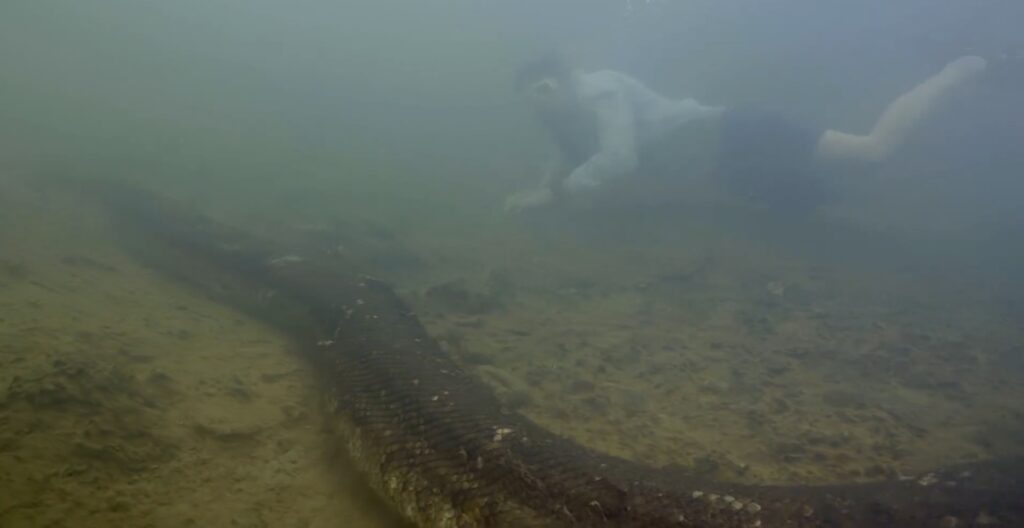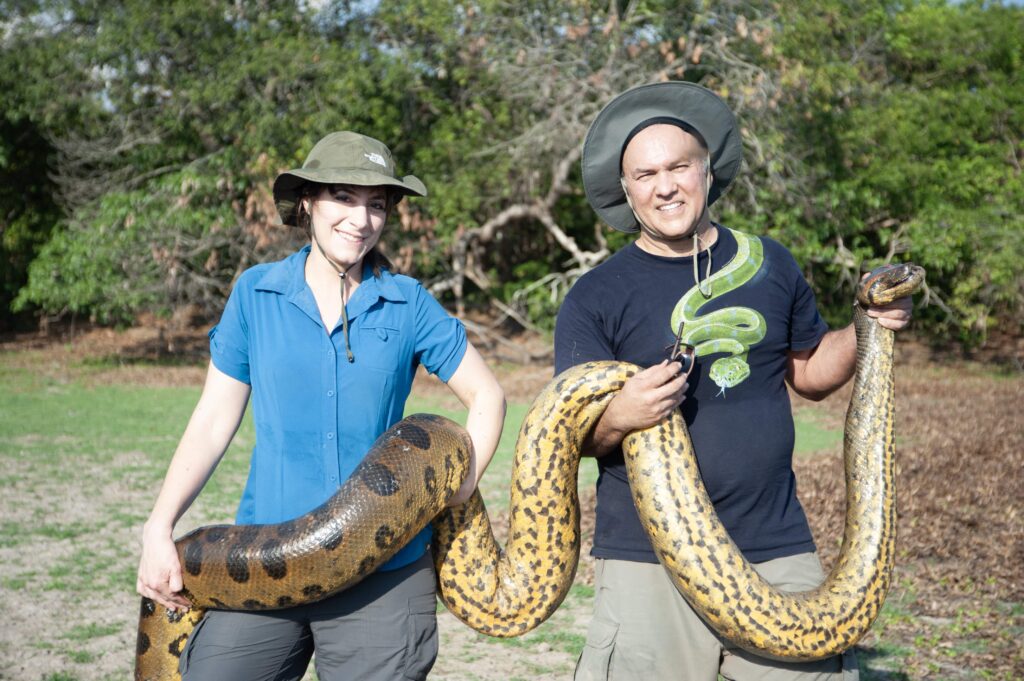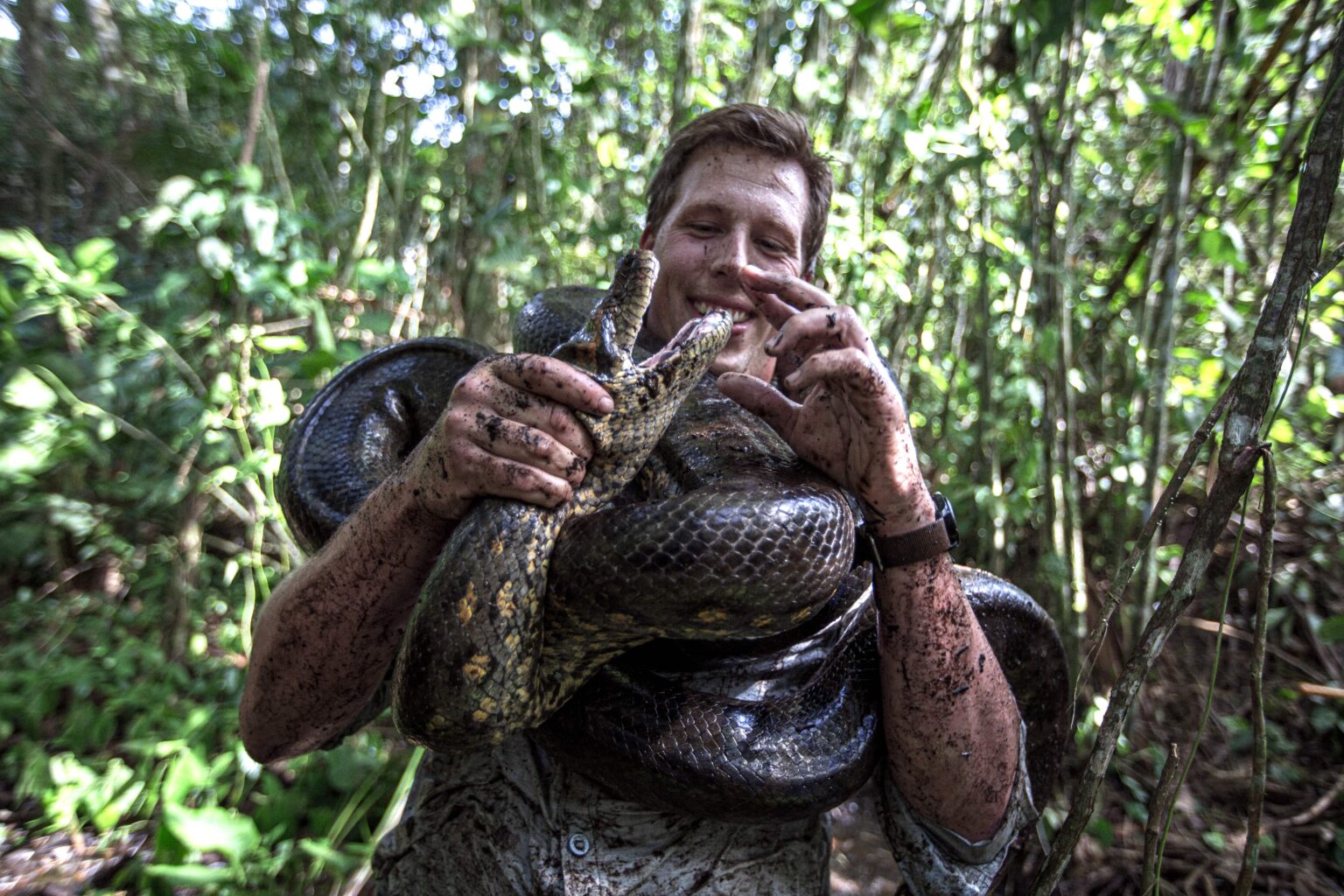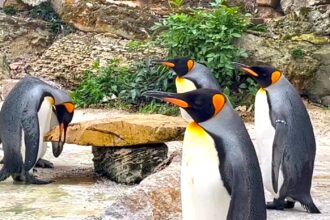The world’s largest snake has been discovered in the Amazon Rainforest and is 26ft long and weighs 440 lbs.
The Northern Green Anaconda is as thick as a car tyre with a head the size of a human’s.
It was found by TV wildlife presenter Professor Freek Vonk in remote Brazil.
The colossal snake is bigger than the previous biggest known species – the reticulated python.
- Advertisement -
They average 20ft 5ins long.
Before now, only one species of Green Anaconda – also called the Giant Anaconda – has been recognised in the Amazon.
READ MORE: VIDEO: Tiny ‘elf’ spotted in at South Pole…on Google Earth

The Northern Green Anaconda was published in a study in the scientific journal Diversity on 16 February.
Dutch biologist Professor Vonk, 40, was filmed swimming next to the enormous anaconda.
- Advertisement -
Vonk was one of 15 scientists involved in the study.
He told What’s The Jam: “That one was 26 feet long and weighed 440lbs.”
He explained: “Together with 14 other scientists from nine countries, we discovered that the largest snake species in the world, the green anaconda.
- Advertisement -
“As we all know it from movies and stories about giant snakes – are actually two different species.
“The green anacondas found in the north of their range in South America – including Venezuela, Suriname, and French Guiana – appear to belong to a completely different species.
“Although they look almost identical at first glance, the genetic difference between the two is 5.5% and that is huge.
“To put this in perspective, humans and chimpanzees are only genetically different from each other by about 2%.”
Prof Vonk added: “We have given the new species the Latin name Eunectes akayima, the Northern Green Anaconda.
“The word ‘akayima’ comes from several indigenous languages of northern South America and means ‘great snake’.”
Prof Vonk said: “You can see in the video the biggest anaconda I have ever seen, as thick as a car tyre, 26 feet long and weighing over 440 lbs – with a head as big as my head.”

The TV biologist also described the effects of climate change on the region.
He added: “The Amazon region is under severe pressure from climate change and continued deforestation.
“Over a fifth of the Amazon has already disappeared, which is more than 30 times the area of the Netherlands.
“The survival of these iconic giant snakes is inextricably linked to protecting their natural habitat.”
Bryan Fry, biologist at the University of Queensland and co-author of the study, said: “It’s important, because the newly described northern green anaconda has a much smaller range than the southern, and so that means it’s much more vulnerable.”
Professor Jesus Rivas, the lead author of the study, explained that they first realised there was more than one species of green anaconda over 15 years ago.

Along with his wife Dr Sarah Corey-Rivas, they started to analyse samples to look for genetic differences.
However, it took until now to publish their findings.
Professor Rivas told What’s The Jam: “Sarah and I started working on this in 2007 when we first noticed there was a big genetic difference between the Venezuelan samples and some samples from Peru.
“Then we started the process of gathering samples and collaborators throughout South America and beyond to complete the mosaic of samples that allowed us to put the study together.
“I worked across countries with various colleagues to gather the samples and Sarah did most of the heavy lifting, sequencing genes and doing the phylogenetic analysis.
“This was a truly international project, looking at the list of authors there is one from Belgium, one from Australia, one from the Netherlands, one from Colombia, one from Brazil, two from Bolivia, two from the US, three from Ecuador, and three from Venezuela.”
He stated: “I have been studying anacondas for 32 years so this begs the question of how many other species there are that we do not know about.
“If such an iconic animal went unnoticed for so many years, what about the less conspicuous and less studied animals and plants?
“This finding humbles the mind regarding the true diversity of South America.”
READ MORE: Goat breaks into couple’s home and attacks man while he’s still in his pyjamas

















